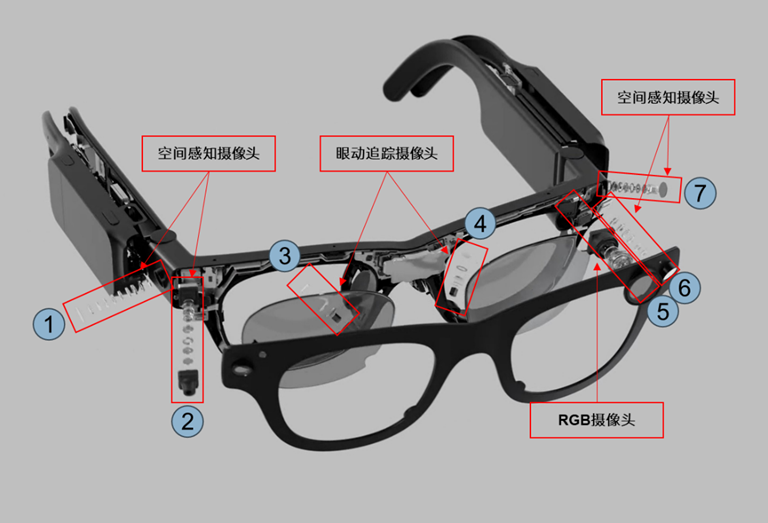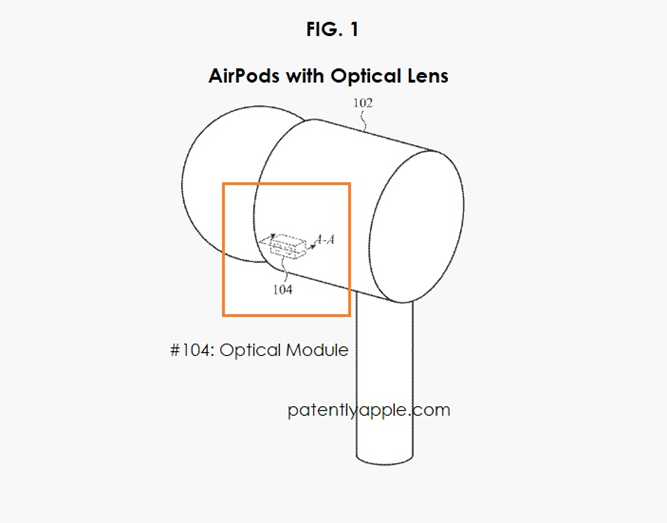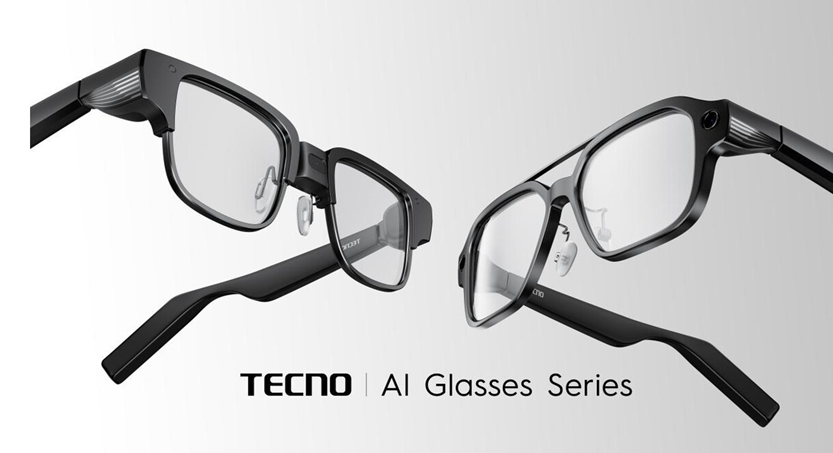Revolutionizing AR Glasses with Multi-Camera Technology | Meta's Journey from Single to Seven Cameras
![]() 04/17 2025
04/17 2025
![]() 454
454
01
Introduction: The Dawn of the Multi-Camera Era
Smart wearable devices are poised to enter a new era characterized by multiple cameras. According to the XR Research Institute, a leading domestic brand is set to launch AR glasses equipped with three cameras this year, while Meta's Aria 2 prototype showcases a seven-camera setup, illustrating the technological shift from single to multiple cameras. Furthermore, Apple is integrating spatial awareness cameras into its next-generation AirPods.
"Multi-camera technology will emerge as a pivotal development direction for AR and AI glasses," remarked Zhu Dianrong, founder of the XR Research Institute. "Both AR and AI glasses will gain enhanced environmental perception and deeper user understanding through multi-camera configurations." Currently, most smart glasses available in the market still employ a single-camera design, limiting their ability to comprehend users and their surroundings. Multi-camera technology is anticipated to usher in a qualitative leap in interactive experiences for these devices.
02
Classification and Significance of AR/AI Glasses Cameras
Meta's Aria 2 is a research-focused smart glasses development platform, designed specifically for AR, AI, and robotics technology research. While it's not a consumer product, it clearly demonstrates the technological trajectory of smart glasses.
Meta Aria 2's Seven-Camera Layout: A Functional Precision Design
Why does Meta's Aria 2 require up to seven cameras? It's not merely a hardware stack but a response to functional requirements. As analyzed by the XR Research Institute, these seven cameras can be categorized into three primary groups, each serving distinct key functions:

Meta's Aria 2 is equipped with seven cameras, Original Image: Meta; Annotation: AR Circle
1. RGB Camera (1)
Currently, this is the only camera type found in most AI and AR glasses, primarily used for photography and video recording. It serves as a fundamental tool for users to capture life moments and share experiences, as well as a vital visual input for AI applications.
2. Spatial Awareness Cameras (4)
This group of cameras is primarily responsible for spatial recognition and gesture recognition. By collecting environmental data from multiple angles, the device can accurately construct a 3D spatial map, enabling precise spatial positioning and object recognition. Additionally, these cameras can capture hand movements, translating natural gestures into device control commands, providing an intuitive interactive experience.
3. Eye Tracking Cameras (2)
These two dedicated cameras are tasked with capturing minute eye movements. Eye tracking technology not only optimizes the photography focusing experience but also aids the AI system in understanding the user's current focus and potential intentions. For instance, when a user gazes at an object, AI can proactively provide relevant information or execute specific operations through eye movement commands, achieving an "instant-view" interaction mode.
Zhu Dianrong emphasizes: "The value of eye tracking cameras surpasses our initial understanding. It not only aids the system in comprehending the user's focus but also brings several key advantages to the technical architecture."
According to XR Research Institute research, the specific benefits of eye tracking technology include:
- Accurate Visual Information Filtering: The glasses can pinpoint the object the user is focusing on. When image data needs to be sent to the cloud for AI analysis, only the specific object or area of focus is transmitted, reducing the need for the entire field of view.
- Reduced Data Transmission Volume: By transmitting only the area of focus, significant amounts of redundant data are avoided, lowering bandwidth requirements for data transmission.
- Improved AI Recognition Accuracy: The AI model receives high-value information pre-screened by the "user's visual attention," rather than panoramic images with numerous interferences, enabling the AI to focus on content that users truly care about, enhancing recognition and understanding accuracy.
- Extended Device Battery Life: Data transmission is a significant battery power consumer in smart glasses. By reducing transmitted data, the device can significantly conserve power, extending battery life.
- Lowered Network Latency: Smaller data packets mean faster transmission speeds and lower network latency, providing users with a more real-time response experience when utilizing cloud-based AI analysis functions.
"These advantages are especially crucial for resource-constrained wearable devices like glasses," adds Zhu Dianrong. "Collectively, they address multiple technical challenges faced by smart glasses, making the cloud-device collaborative AI processing architecture more efficient and feasible in practical applications."
Apple's Multi-Camera Strategy: Synergy between AirPods and AR Glasses
According to reports from Patentlyapple and other foreign research institutions, Apple's newly developed AirPods will be equipped with multiple micro cameras for omnidirectional environmental perception and spatial positioning. These cameras will enable two core functions: more precise spatial audio effects through multi-angle environmental scanning and multi-source data collaboration with other Apple AR devices.
The XR Research Institute reveals that Apple's lightweight AR glasses project is progressing steadily. Expected to launch in 2027, this product will adopt a multi-camera design with visual perception capabilities surpassing current market offerings, supporting more precise environmental understanding and augmented reality experiences.
Apple's deployment of multi-camera technology across different wearable devices underscores the importance of multi-angle perception as a core capability in the future AR ecosystem. This strategic choice aligns with competitors like Meta and Google, further confirming the pivotal role of multi-camera technology in the next generation of smart wearable devices.

Apple's patent drawing showcasing headphones with cameras, Source: Patentlyapple
Gradual Upgrade Path for Domestic Smart Glasses
Compared to Meta, domestic smart glasses manufacturers have adopted a more pragmatic and gradual development approach. According to the XR Research Institute, most AI and AR glasses in the market are still in the single-camera stage, but technological evolution is accelerating.
"This year, a prominent domestic brand will introduce smart glasses equipped with three cameras, marking a significant step for domestic smart glasses towards the multi-camera era," says Zhu Dianrong. "This three-camera configuration includes one RGB camera and two eye tracking cameras, offering users a richer functional experience."
The XR Research Institute forecasts that the market will witness high-end smart glasses equipped with five or even seven cameras next year, further narrowing the technological gap with international leaders.
03
Industry Chain Perspective: Costs and Opportunities
Camera Module Cost Considerations
A multi-camera configuration undoubtedly increases product costs. Based on market research data from the XR Research Institute, using current market prices as a reference:
- RGB Camera: Approximately 80 yuan/piece
- Spatial Awareness Camera: Approximately 50 yuan/piece
- Eye Tracking Camera: Approximately 80 yuan/piece
Given Meta Aria 2's configuration, the cost of the camera module alone totals: 80 yuan + (50 yuan × 4) + (80 yuan × 2) = 440 yuan. This excludes the cost of computing chips and other supporting hardware required to process data from these cameras.
Zhu Dianrong states: "This explains why various smart wearable devices adopt a gradual camera upgrade path, gradually increasing the number and types of cameras as technology matures and costs decrease. However, considering the system-level optimizations enabled by multi-camera technology (including data transmission, power consumption, and user experience), these additional costs are reasonable investments in the overall value assessment."
Industry Chain Opportunities: Beneficiaries of the Multi-Camera Trend
As smart glasses and wearable devices embrace multi-camera configurations, the entire industry chain is experiencing a new wave of growth opportunities. The latest analysis from the XR Research Institute shows that camera suppliers are expected to be the primary beneficiaries of this trend.
Hongjing Optoelectronics, leveraging its technical expertise in camera modules for panoramic cameras, drones, smart cars, and robots, has pioneered in supplying camera modules to Transsion, Thunderobot, and a renowned domestic brand, and is actively negotiating with over a dozen potential customers, reflecting strong market demand for miniaturized camera modules. This cross-domain experience gives Hongjing a unique edge in addressing the challenges of miniaturization and integration of multiple cameras in wearable devices.

Transsion AI glasses equipped with cameras supplied by Hongjing, Source: Transsion

Thunderobot AI glasses equipped with cameras supplied by Hongjing, Source: Transsion
Sunny Optical, leveraging its deep expertise in the optical field, has also successfully entered the supply systems of multiple smart wearable device manufacturers, establishing a strong market presence. Amid the wave of localization, United Imaging has introduced camera modules fully adopting domestically produced image sensors, gaining market recognition with independent controllability and high cost-effectiveness, offering domestic manufacturers more diverse supply options.
Sunway Co. (a subsidiary of Luxshare Precision), as a camera module supplier for Apple's Vision Pro, has accumulated relevant experience in the field of XR device cameras and is expected to supply camera modules for future Apple AR glasses. Meanwhile, Q-Tech and O-Film are also accelerating their layout in the wearable device camera market based on their consumer electronics camera technology foundations.
With the deepening of the multi-camera trend, these enterprises are actively adjusting their product structures to adapt to changes in market demand. Collaborative innovation across the upstream and downstream of the industry chain will provide robust technical support for the multi-camera trend in smart wearable devices.
04
The Multi-Camera Era Has Begun, Offering Golden Opportunities for the Camera Supply Chain
From single to multiple cameras, multi-camera technology is reshaping the perception capabilities and interaction methods of AR/AI glasses and various smart wearable devices. Zhu Dianrong notes: "When these devices can comprehensively perceive users' behaviors, emotions, and intentions, they will truly become a natural interface connecting humans and the digital world."
"Leading in multi-camera technology will confer a decisive advantage in the competition for the next generation of smart wearable devices," concludes Zhu Dianrong. He emphasizes: "The AI/AR glasses market is poised for unprecedented explosive growth. It is estimated that global annual shipments of AR/AI glasses will exceed 100 million pairs by 2030 and soar to 1 billion pairs by 2035. If we calculate an average of five cameras per pair of glasses, 5 billion cameras will be required annually, representing a purely incremental market independent of existing terminals like smartphones. This will present unprecedented historical expansion opportunities for the entire camera industry chain!"
Zhu Dianrong is confident in the prospects of Chinese enterprises: "Leveraging their extensive experience and technological advantages in the camera field, Chinese enterprises are expected to capitalize on the AI/AR glasses development wave, enabling domestic smart glasses manufacturers and related supply chain enterprises to occupy a more critical strategic position in the global market landscape. As the industry chain becomes increasingly sophisticated, we believe that Chinese manufacturers will emerge as key drivers of this visual revolution."








